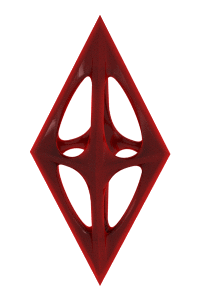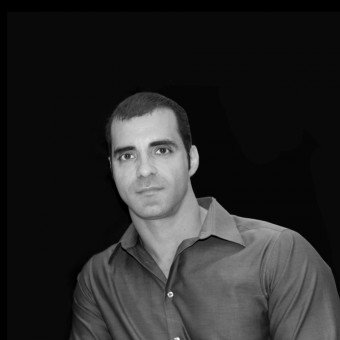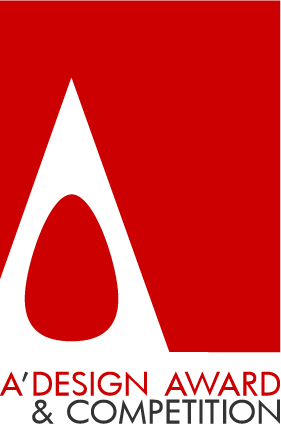
| THE AWARD |
| CATEGORIES |
| REGISTRATION |
| SUBMIT YOUR WORK |
| ENTRY INSTRUCTIONS |
| TERMS & CONDITIONS |
| PUBLICATIONS |
| DATES & FEES |
| METHODOLOGY |
| CONTACT |
| WINNERS |
| PRESS ROOM |
| GET INVOLVED |
| DESIGN PRIZE |
| DESIGN STORE |
| THE AWARD | JURY | CATEGORIES | REGISTRATION | PRESS | WINNERS | PUBLICATIONS | ENTRY INSTRUCTIONS |
Interview with Luciano Santelli |
Home > Designer Interviews > Luciano Santelli |
Editor Frank Scott (FS) from DesignPRWire has interviewed designer Luciano Santelli (LS) for A’ Design Award and Competition. You can access the full profile of Luciano Santelli by clicking here.

FS: Could you please tell us more about your art and design background? What made you become an artist/designer? Have you always wanted to be a designer?
LS: I've always wanted to be a designer, but didn't know a lot about the profession. When I got into university I discovered I was in the right place.
FS: Can you tell us more about your company / design studio?
LS: I own a small studio, with me being the only creative force. I started out with small items such as lamps and clocks, later moving to small furniture.
FS: What is "design" for you?
LS: Design is above all things communication. A successful design means the final client undestood your message, and thai it was a relevant one.
FS: What kinds of works do you like designing most?
LS: I'm focusing more on furniture design, small accent furniture. In this realm, tables are a favourite item.
FS: What is your most favorite design, could you please tell more about it?
LS: I consider my favorite design a wall clock done in 2005. It had a long life in the market: 6 years. It was totally base on circles, and the name was a popular expression in Portuguese: "Ora Bolas!" which means "wow!" but also is fonetically identical to "Hora Bolas" (hours/circles) , the clock's actual name. Is was an interesting integration between language and design.
FS: What was the first thing you designed for a company?
LS: A table clock.
FS: What is your favorite material / platform / technology?
LS: I am very fond of laser cutting, and eventually would love to move into 3d printing.
FS: When do you feel the most creative?
LS: In the morning, or when I'm relaxed.
FS: Which aspects of a design do you focus more during designing?
LS: Overall harmony and assertiveness, I like design to be clear and contundent.
FS: What kind of emotions do you feel when you design?
LS: I feel bold.
FS: What kind of emotions do you feel when your designs are realized?
LS: I feel complete.
FS: What makes a design successful?
LS: Having an interesting messege, and saying it out clearly.
FS: When judging a design as good or bad, which aspects do you consider first?
LS: The first impact. Good design to me has to be iconic.
FS: From your point of view, what are the responsibilities of a designer for society and environment?
LS: The designer must use quality, durable materials, that are friendly to the enviroment. Also, we should create captivating designs that develop a deeper relationship. Creating a deeper meaning to design can make products less disposable.
FS: How do you think the "design field" is evolving? What is the future of design?
LS: I thing people will want more personalized items, done in different production processes. Home is a very special place, and products we use at home should have a meaning and an afffection sense. So I foresee a greater interest in personalized items, rather than only in extreme mass production products.
FS: When was your last exhibition and where was it? And when do you want to hold your next exhibition?
LS: My last expo was in São Paulo in 2011. In the past few years I changed my focus to small furniture, so befor I exhibit again I want to have a line of products. I plan to exhibit in january 2016, in São Paulo
FS: Where does the design inspiration for your works come from? How do you feed your creativity? What are your sources of inspirations?
LS: Many sources: architecture, other designers, photopraphy, paintings, cinema.
FS: How would you describe your design style? What made you explore more this style and what are the main characteristics of your style? What's your approach to design?
LS: My design is contemporary and clean. I try to put a different twist, weather in material or form, so approach is to captivate with harmony and a different twist.
FS: Where do you live? Do you feel the cultural heritage of your country affects your designs? What are the pros and cons during designing as a result of living in your country?
LS: I live in Brazil, and as a multi-cultural country I'm exposed to many influences. different cultures that made the country, nature but also the urban enviroment of São Paulo. The pros: Brazil is far from being boring, reality is always changing. The cons: economic instability.
FS: How do you work with companies?
LS: I usually show a final product. In terms of design and production.
FS: What are your suggestions to companies for working with a designer? How can companies select a good designer?
LS: Companies should focus on designers with a sense of reality while still being creative and bold.
FS: Can you talk a little about your design process?
LS: I have some basic ideas in mind and when I find an adequate physical support i start developing them.
FS: What are 5 of your favorite design items at home?
LS: Tables, lamps, clocks, electronics, and chairs.
FS: Can you describe a day in your life?
LS: Start creating in the morning specialy in the begining of the week, then I let some designs "mature", and polish details.
FS: Could you please share some pearls of wisdom for young designers? What are your suggestions to young, up and coming designers?
LS: Research design history, so you don't waste time creating something already done.
FS: From your perspective, what would you say are some positives and negatives of being a designer?
LS: Positive: creating something new from scratch to final product is amazing. Negative: not everybody will understant your work.
FS: What is your "golden rule" in design?
LS: Clarity of ideas: don't put too much information in one product.
FS: What skills are most important for a designer?
LS: The hability to sense what people might want in the future.
FS: Which tools do you use during design? What is inside your toolbox? Such as software, application, hardware, books, sources of inspiration etc.?
LS: Tools: Rhinoceros, Bunkspeed Shot, Corel Draw. Inspiration: other designs, historic designs, architecture, photography.
FS: Designing can sometimes be a really time consuming task, how do you manage your time?
LS: I divide the day in blocks.
FS: How long does it take to design an object from beginning to end?
LS: At least 6 months.
FS: What is the most frequently asked question to you, as a designer?
LS: Where did your inspiration come from?
FS: What was your most important job experience?
LS: Designing products for a Brazilian chain. That taught me the importance of production costs in design.
FS: Who are some of your clients?
LS: Carbono and Decameron Design. But in search of more clients.
FS: What type of design work do you enjoy the most and why?
LS: Small furniture, for it's expression possibilities.
FS: What are your future plans? What is next for you?
LS: Creating a line of products. And also, working independently to other companies;
FS: Do you work as a team, or do you develop your designs yourself?
LS: I work alone.
FS: Do you have any works-in-progress being designed that you would like to talk about?
LS: Yes, some products made out of marble and metal. They are still in development.
FS: How can people contact you?
LS: By e-mail: contato@santellidesign.com.br
FS: Any other things you would like to cover that have not been covered in these questions?
LS: I think everything is covered. Thank you.
FS: Thank you for providing us with this opportunity to interview you.
A’ Design Award and Competitions grants rights to press members and bloggers to use parts of this interview. This interview is provided as it is; DesignPRWire and A' Design Award and Competitions cannot be held responsible for the answers given by participating designers.
Press Members: Register and login to request a custom interview with Luciano Santelli.
| SOCIAL |
| + Add to Likes / Favorites | Send to My Email | Comment | Testimonials |

